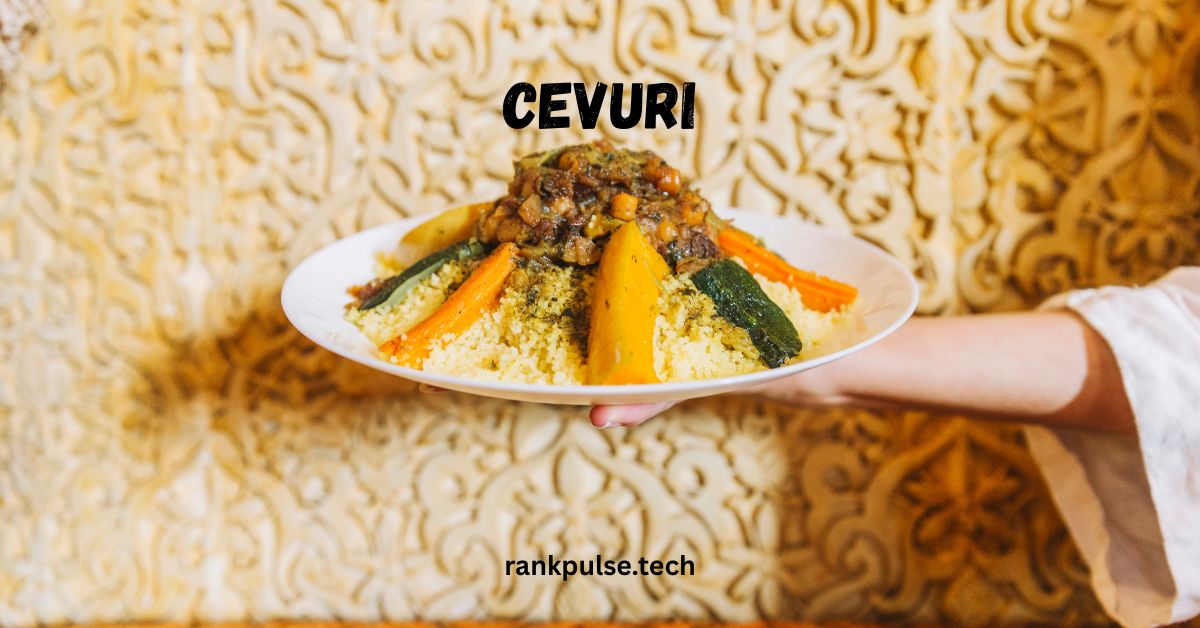Cevurı: Discover the Flavors, Culture, and Tradition of This Unique Cuisine
Cevurı is more than just food—it’s a culinary and cultural experience that connects people across generations. Originating from Turkish traditions, itrepresents togetherness, flavor, and heritage. Known for its bold spices, fresh vegetables, and carefully chosen proteins like lamb or chicken, this dish embodies the richness of Turkish cuisine. Whether prepared for family meals, weddings, or festivals, Cevurı is not just about taste—it’s about storytelling through food. Today, it has gained attention worldwide for its versatile cooking methods and cultural value, making it one of the most searched and talked-about traditional dishes.
What is Cevurı? The Meaning Behind the Dish
At its heart, it cuisine symbolizes unity and hospitality. Traditionally served during communal gatherings, it reflects Turkish values of generosity and celebration. The word “Cevurı” represents a dish that is deeply tied to rural traditions, where meals were shared among families and communities. Unlike fast food or modern shortcuts, it emphasizes slow preparation, attention to detail, and authentic flavors. It’s often prepared with fresh seasonal ingredients, which enhance taste and keep the dish healthy. Today, food lovers view it as both a heritage recipe and a modern culinary trend adaptable to different lifestyles.
Ingredients That Define Cevurı Cuisine
The magic of Cevurı recipes lies in their ingredients. Common proteins include lamb, chicken, or beef, though vegetarian and vegan variations now exist. Fresh vegetables like tomatoes, onions, peppers, and eggplants add color and nutrition, while grains or legumes provide heartiness. What makes it stand out is its unique spice blend—cumin, paprika, sumac, cardamom, and fresh parsley create layers of rich aroma and flavor. These seasonings give Cevizli its unmistakable warmth and depth, setting it apart from other Turkish dishes. By combining everyday ingredients with traditional spices, it offers a balanced meal full of flavor and nourishment.
Cooking Methods: How Cevurı is Prepared
One of the reasons Cevurı remains so popular is its versatile cooking techniques. Traditionally, it’s grilled on skewers over an open flame, giving the dish a smoky, charred flavor. Sautéing is another option, allowing vegetables and spices to caramelize beautifully. Baking, however, brings out a slow-cooked richness where flavors meld together perfectly. Each method creates a unique texture, from juicy meats to tender vegetables. This flexibility allows cooks to adapt recipes for home kitchens or professional restaurants. Whether grilled for outdoor feasts or baked for family dinners, it preparation guarantees a delicious and satisfying dining experience.
Cevurı as a Symbol of Culture and Community
It is not only a dish but also a cultural tradition. For centuries, it has been served at weddings, religious festivals, and community gatherings in Turkey. Preparing and sharing it symbolizes hospitality, friendship, and unity. Families often come together to cook it, making the preparation process as meaningful as the meal itself. In many villages, elders pass down recipes and cooking techniques to younger generations, keeping traditions alive. Today, it still carries this sense of togetherness, whether served at large celebrations or shared at intimate family tables. It’s truly a dish of connection and culture.
Regional Flavors and Modern Variations of Cevurı
Across Turkey, regional versions of it highlight local tastes. In Gaziantep, pistachios and bold spices are added, while coastal regions may include citrus notes for freshness. Central Anatolia often blends in warm spices like cinnamon or cloves, creating a unique twist on the dish. Modern chefs are also reinventing Cevurı with vegetarian, vegan, and fusion recipes that appeal to global audiences. This ability to evolve while preserving its core makes it timeless. Whether enjoyed as a traditional family recipe or a contemporary restaurant creation, it continues to adapt while keeping its cultural essence intact.
Health Benefits of Cevurı Cuisine
Beyond taste and tradition, Cevurı is a healthy dish when prepared with fresh, wholesome ingredients. Lean meats provide protein, while vegetables supply essential vitamins, minerals, and fiber. Spices like cumin, paprika, and sumac not only enhance flavor but also offer anti-inflammatory and digestive benefits. Vegetarian variations of it add legumes or grains, making it nutrient-rich and suitable for diverse diets. Unlike processed meals, Cevurı celebrates natural cooking methods and balanced nutrition. For health-conscious individuals, this dish offers the perfect mix of flavor and wellness, making it ecipes a smart choice for modern lifestyles.
Conclusion
Cevurı is more than just food—it’s a culinary heritage that bridges the gap between tradition and modern innovation. With its rich flavors, cultural symbolism, and healthful benefits, it continues to win hearts globally. Whether grilled, baked, or sautéed, the dish embodies community, flavor, and nourishment. Its adaptability ensures it remains relevant in today’s diverse kitchens, appealing to traditionalists and modern foodies alike. As global interest in authentic cuisines grows, Cevurı stands out as a symbol of Turkish culture, flavor, and togetherness—a dish that deserves its place in culinary conversations worldwide.
FAQs
Q. What is Cevurı cuisine?
It is a traditional Turkish dish prepared with meat, vegetables, and spices, often served during festivals and gatherings.
Q. What ingredients are used in it?
Typical ingredients include lamb, beef, or chicken, seasonal vegetables, legumes, and spices such as cumin, paprika, and sumac.
Q. How is it cooked?
It can be grilled, sautéed, or baked. Each cooking method brings out unique textures and flavors.
Q. Why is it culturally important?
Cevurı symbolizes hospitality, unity, and tradition and is often prepared during weddings, festivals, and communal celebrations.
Q. Are there modern variations of Cevurı?
Yes, today there are vegetarian, vegan, and regional adaptations that keep the dish fresh and relevant.


